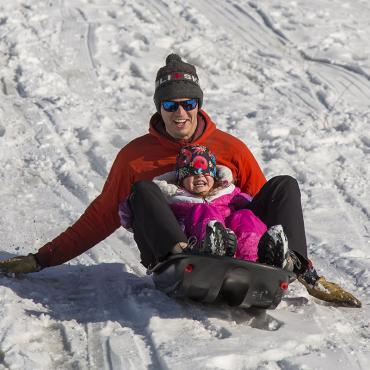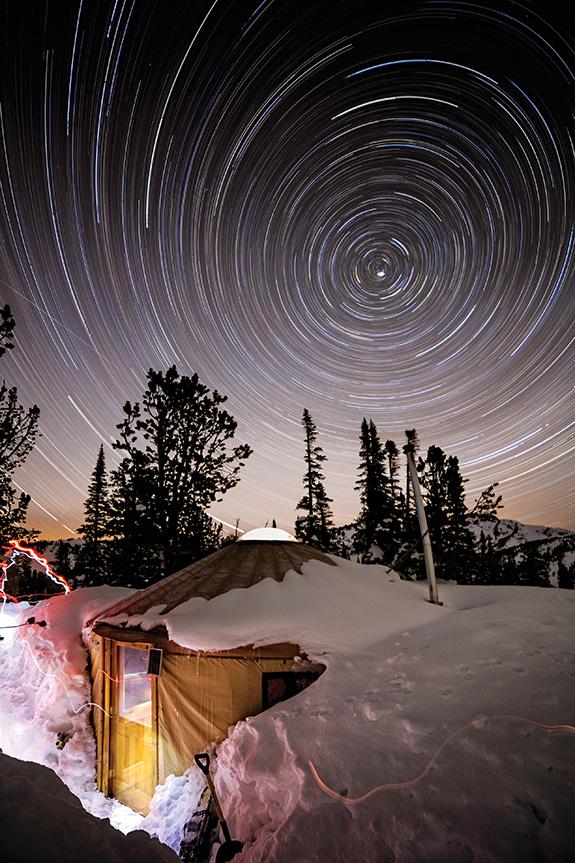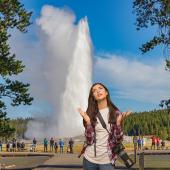Shooting Stars
Astrophotography tips.
It’s no secret that whenever it’s not snowing, Montana winter nights are long, cold, and crystal clear, creating a winning combination for spectacular images of the night sky. Astrophotography is the general term used to refer to vibrant images of the Milky Way or star trails streaking across the sky. A firm grasp on the basics will have you out capturing the stars in no time.
Equipment
For starters, astrophotography really requires a DSLR or mirrorless camera with manual controls. A full-frame sensor will give the best image quality, and a lens with a large aperture will help capture the greatest portion of the sky with optimal detail. A tripod is essential for any type of night photography—get a sturdy one. Other helpful items to pack along include a headlamp, warm clothes, some snacks, and a hot drink.
Setup
Movement is the enemy of long exposures. Make sure to get a firm footing for your tripod and if it’s windy, you may even need to weigh it down with some rocks or your camera bag. Next, if you’re not using a mirrorless camera, use the live-view mode if you have it, as the movement of the mirror can cause your camera to move. I like to use a remote-shutter release, but using the self-timer function on your camera can eliminate movement just as well.
Set your camera on full manual. If you are using a mirrorless camera, use the digital zoom preview to enlarge a bright star as much as possible. Adjust your focus until the star looks like a sharp pin-prick; it'll be close to infinity but not quite all the way. For Milky-Way images, use a higher ISO and wide-open aperture to keep your exposure under 30 seconds. This will keep the movement of the stars from becoming noticeable. For star trails, you will likely be out for several hours, so plan accordingly. Use a lower ISO and stop down to lengthen the exposure time and capture those bright arcs across the night sky. For more curved star trails, aim at the North Star, the point the whole night sky appears to revolve around.
Planning & Execution
Weather plays an important role; you can’t see the stars if it’s overcast. Be sure to wait for the right evening, but a few clouds can be an interesting element to experiment with. The moon is another important consideration; it puts off an immense amount of light that will make stars appear less bright or even obscure some fainter stars all together. Expect to experiment and don’t get discouraged if your first try isn’t perfect. It takes practice, but it’s well worth the effort and you’ll have plenty of fun along the way. Studying other photographers’ work and doing some extra research can help shorten your learning curve. While the sky is the most important part of the image, don’t forget about context. Adding interesting foreground elements or lighting up things on the ground as part of your image is a great way to add depth and really make your images stand out.
Now, bundle up, grab your camera, and go play in the dark.
Ian Roderer is the assistant photo editor for Outside Bozeman.












